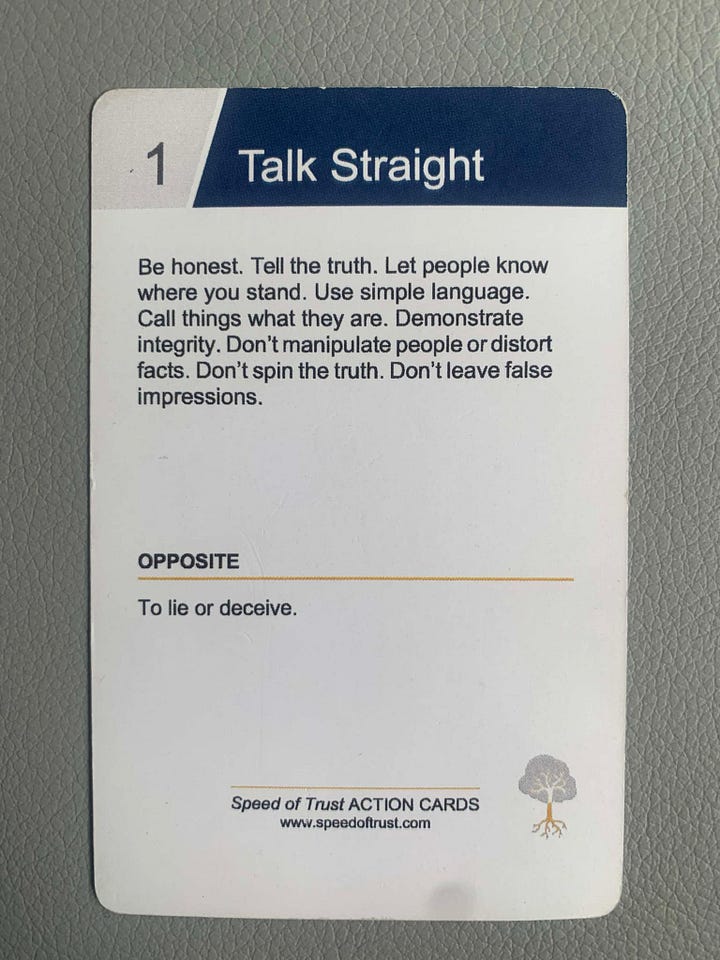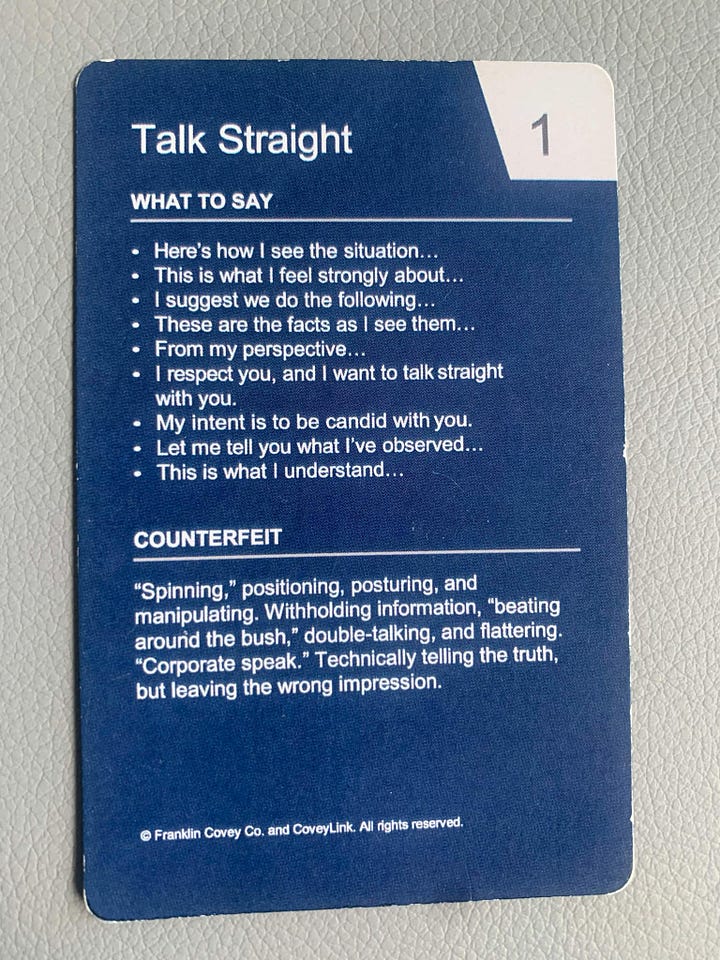Decoding Amazon's "New" Pay Structure
Behind the cheery propaganda lurks a red flag about the pace of growth
Once again, I am moved to translate an inscrutable Amazon announcement that pretends to be about one thing and is really about another. That pretends to be innovative when it’s the same cheap wine decanted from a new recyclable box.
This latest policy update says that if an Amazon employee achieves a "Top Tier" performance rating four years in a row, they’ll get a raise taking them to 110% of the pay band for their role and level.
You can read more about the announcement here, but you won’t find much. It’s another corporate word salad.
There is one other interesting note, which stipulates that the money to pay for it won't come from CEO Andy Jassy's bonus. It'll come from docking the pay of others who have been rated elite for merely one year, and still others further down the rating scale.
Insisting some employees subsidize the pay of others is Amazon’s unique way of celebrating their commitment to meeting or exceeding a high performance bar.
But let’s hold that thought for a moment while we clutch a few handy Amazon facts for context.
➡️ Every salaried Amazonian is given one of five ratings in the annual talent review. Top Tier (TT), Highly Valued (HV3/2/1), or Least Effective (LE).
➡️ The percentages assigned to these categories are dictated by Seattle. They vary by division and business. They also vary by how many people the company wants to force out. LE is presumptive death sentence, though an ornate “support” process pretends otherwise to insulate against lawsuits and bad press.
➡️ TT gets you a raise and usually a promotion. HV3 gets you a raise and an approving head pat. HV2 gets you a sub-inflation token reflecting corporate ambivalence. HV1 gets you a pay cut and usually means you're either new in level or have a target on your back. LE gets you managed out. Some recover, but not many. Amazon never tells us how many.
➡️ Talent ratings are always inaccurate by some degree and often completely wrong. They do not reflect character whatsoever. You can exemplify Amazon's leadership principles and still get a low rating. I was rated a “role model” leader as a GM and still received an HV1 rating in my first talent review after promotion, for example.
➡️Talent ratings often don't reflect performance. They reflect a committee decision based on results, tenure, pedigree, bias, perceived association and support for issues du jour, and undefined vagaries like "potential" which serve as smokescreens for pretextual motives. For example, when DEI was fashionable, talent ratings reflected it. Now that it’s not, they won’t. Organizational politics drives ratings at least as much as performance.
If you’re still hungry for context, check out a more detailed chronicle of the company’s talent process, which blindly imitates Jack Welch’s “forced distribution” model despite damaging the company’s culture, reputation, and bottom line.
Now let me tell you two things that have been traditionally true at Amazon.
1️⃣ If you were consecutively TT, you were almost certain to be promoted.
2️⃣ After being promoted, you were almost certain to be parked in HV1 in your new level. Only in your second assessment could you climb back up. The stated reason was that you were too new in your role to be accurately assessed. The actual reason was that higher ratings were reserved for those being pushed for promotion. You couldn’t secure those ratings, regardless of performance, until it was “your turn.”
All of which meant no one could string together four TT ratings. The streak would always be broken by promotion.
In 7.5 years, I never saw or heard about a four-time TT. That doesn't mean it was impossible. But it was unheard of. TTs were usually limited to 5% of each level and absorbed totally by promotion candidates being pushed.
What Amazon is telling us is that's changed.
Growth has slowed. With less expansion, there are no new roles being created, a lot less lateral and vertical movement, and way fewer promotion opportunities to go around. Jassy's moves to chop out masses of salaried workers and trigger mass attrition with unpopular policies like universal 5-day RTO have created a contraction cycle in the salaried workforce.
Which brings us to what this is really about.
Amazon needs to retain its best talent, or be seen trying to do so, in a new paradigm where there is less growth and progression attached to elite performance.
So it's offering those people the same raise they would get with promotion, which is usually a standard +10% on whatever they were making before.
Remember that half or more of compensation for senior Amazonians comes in the form of shares which vest and become redeemable on a multi-year schedule. And the growth of those shares hasn’t been as uncertain as it is now since well before the pandemic.
Remember also that Amazon compensation targets are just that. They are not contractually guaranteed and can be revised down substantially year-on-year. My introduction to Amazon’s “fuzzy math” came when the gleaming $300k in compensation waved in front of me after promotion to GM magically morphed into $240k less than a year later. I made less in that second year than before the promotion — way less when inflation was priced in.
When you consider the nuance, Amazon’s new offer for elite performers isn’t worth a whole lot. They’re acknowledging someone is a tiger among cats and then expecting them to salivate at a sack of gently shaken kibble treats.
All of which means that by my count, there are three lies being told here.
This isn’t an innovative strategy to recognize top talent. It’s an effort to retain talent in spite of throttled promotions, decelerating prospects, and limited growth opportunity.
There’s no wow factor for elite performers. They’re being shown a 10-pound fish that they know will be picked down to half before it is hauled to the boat and sizzled down even more in the frying pan. This is a gimmick, and people smart enough to make TT will see straight through it.
There’s no new money being thrown at high performers, which is why I used scare quotes in the title. With fewer promotions, Amazon is issuing fewer shares and bonuses. Giving top performers the raise they would have gotten for the promotion they can’t have is a cute signal. But with the 10% being taken out of the paychecks of others, the absence of new share payouts and presence of capped salary bands means this is a net savings for Amazon. They’re using propaganda to mask another cynical exploitation of employees to fund AI investments that will someday make those same employees jobless. Same circus, same clowns, different color of floppy shoes for this dance.
I don’t think the world is curious as to why Amazon chooses a dishonest approach here instead of giving this move accurate labeling.
By now, most of us know this company is leading the charge toward some sort of dystopian techno-feudal future where AI has replaced most human employees and the few remaining are begging for alms to make ends meet.
Amazon will dependably do what it perceives is in its interest, however that is defined.
When your c-suite is comprised of yes men/women, financial rationalists obsessed with quarterly earnings, and people who reached their roles by discarding convictions rather than expressing them, interest gets boiled down to share price. More specifically, short term share price.
In that world, it seldom makes sense to tell people the truth. Because lying is the world’s oldest and most popular shortcut for the rapid aggregation of wealth.
There are two specific risks Amazon mitigates by employing corporate propaganda instead of leveling with people.
First, too much truth might spook the employee herd. Rapid personal growth and fast career-building have been the main reasons elite performers join and stay with Amazon. Remove those elements and it starts looking more like the salt mine it has devolved into. And when you’ve been raging around with a chainsaw firing anyone and everyone you can, the sudden reality of a tariff regime and unstable politics engenders anxiety about hanging on to the best of what you’ve got left.
Second, too much truth might injure shareholder confidence. The CEO has been framing Amazon as the world’s biggest startup. Openly admitting growth has decelerated to a point it creates a retention risk would undermine that bullshit message. Whereas positioning this as a smart talent strategy engenders the sort of false confidence necessary to continue separating investors from their wallets.
I’ve said for a year now that the scant evidence available, alongside the inferences reasonably drawn from corporate behavior, demonstrate this company is a lot more fragile than its propaganda or Wall Street would have us believe.
This attempted sleight of hand can be seen as another subtle signal that all is not well in the house Jeff built.
In my time at Amazon, I attended a Franklin Covey workshop called “Speed of Trust.” It gave teams time and space to collaborate on the subject of workplace honesty. To unearth and pull apart the concepts of communication, authenticity, and relationships.
Speed of Trust was one of the best development seminars I’ve ever attended. In pre-pandemic Amazon, it felt like a genuine effort to upskill leaders in creating a sense of belonging, mutual respect, and shared endeavor. I knew from my military experience this was the key to inspiring the best in people.
Among the top lessons of that course was the importance of talking straight.


It boggles the mind that today’s Amazon could be even a distant descendant of one championing such levels of transparency among senior leaders.
Don’t spin the truth.
Don’t tell technical truths while leaving false impressions.
Don’t withhold information.
Don’t use “corporate speak.”
Rules we were expected to follow as representatives of Amazon. Rules that have since been discarded in favor of extreme cynicism and a cutthroat relationship between this massive employer and it’s own workforce.
Alas, ‘twas all for naught.
But hey, at least we got Americans addicted to cheaply manufactured Chinese goods just in time for one of history’s great rug pulls.
Tony is an independent writer on leadership and organizations. He is a former Amazon operations director with more than three decades of operations management experience in public and private sector roles, complimented by a masters degree in Organizational Leadership from George Washington University.





+1
Spot on assessment. Of all the things Amazon does well, evaluation is not one of them.